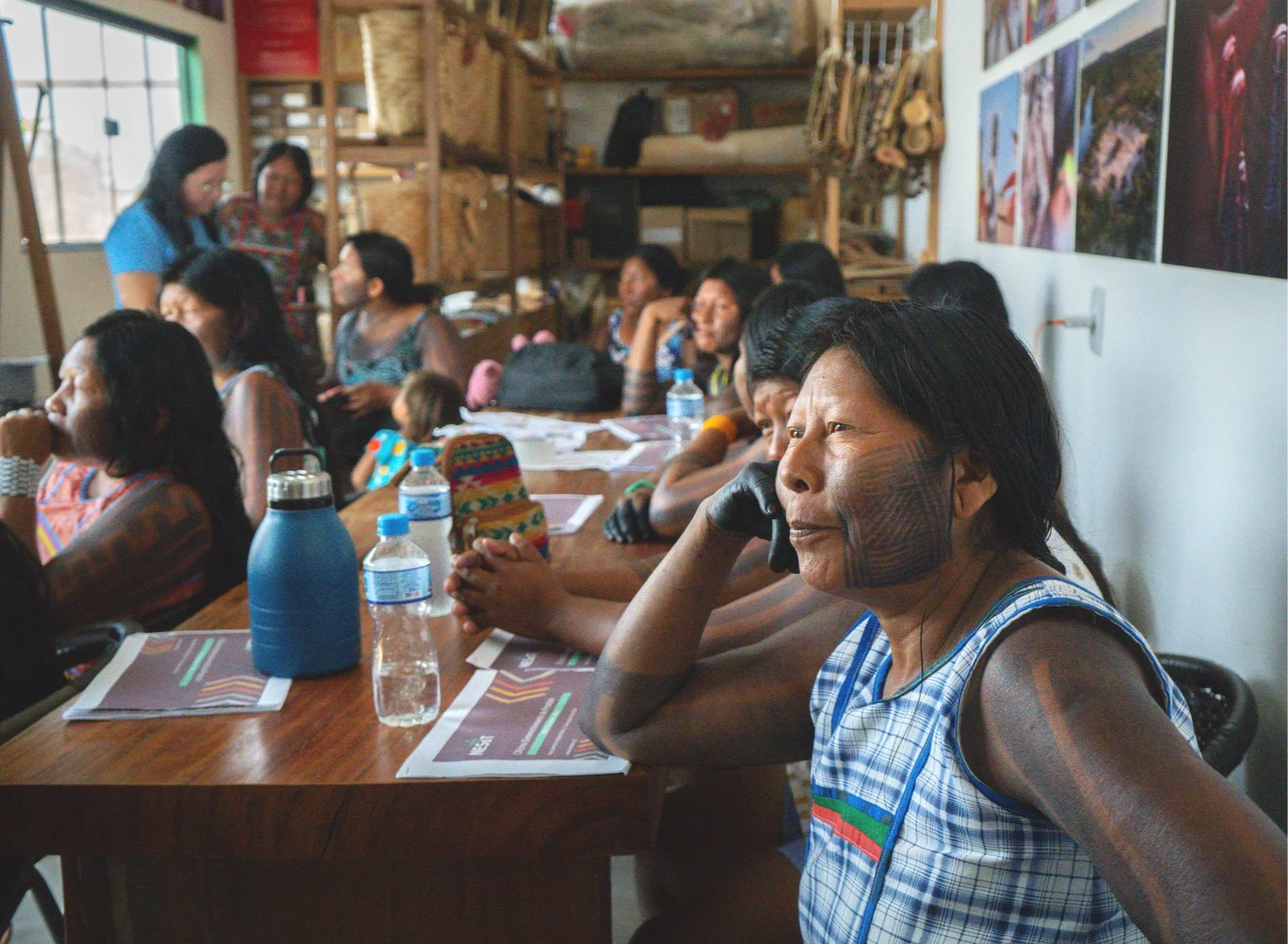Photo: Ricardo Calderón, CEO of NESsT portfolio enterprise Agrosolidaria spoke at COP16 about the difficulties he has faced to accessing financing
The International Finance Corporation (IFC) estimates that 65 million firms—or 40% of formal micro, small and medium enterprises (MSMEs) in developing countries—have an unmet financing need of $5.2 trillion every year. This issue is particularly pronounced in Latin America and the Caribbean, where MSMEs form an essential part of the regional economy but experience the second largest financing gap globally, following East Asia.
Several factors contribute to MSMEs facing greater credit constraints compared to larger companies. These smaller entities often have less collateral, limited financial histories, and fewer resources to comply with the administrative, governance, and financial management requirements set by investors and lenders.
This challenge is compounded when investors and banks do not possess the necessary expertise to accurately assess the risks associated with funding small entrepreneurs.
When grassroots enterprises and MSMEs cannot access financing, the effects extend far beyond the individual businesses to communities and the ecosystem, hindering economic growth, innovation, job creation and conservation efforts.
In regions like the Amazon, this funding gap also exacerbates social inequalities and leaves marginalized communities underserved.
“As grassroots organizations, we face various challenges in accessing financing. One issue is that the available resources often come with a welfare system that doesn’t fully align with the objectives of our organization. Another challenge is the difficulty in accessing financing that can bridge the gaps identified by our organization, to foster the growth of our models. Resources are often earmarked for areas where organizations have not yet reached the maturity level needed for such investments, but we need financing that bridges these gaps, helping us grow in stages.”
The lens of local communities: the cost of applying for funding from multiple sources
Riverine social organization ASPROC was one of the 10 enterprises to be interviewed as part of NESsT’s study
The agricultural enterprises that NESsT interviewed as part of its study on Amazon bioeconomy funding shared that they struggle to meet complex application and reporting demands for both local credit programs and international funding.
Additionally, a few enterprises highlighted that they do not have the human and capital resources to provide granular data currently required by certain international development associations.
NESsT Case Studies: Examples of enterprise missing financing opportunities due to complex application and reporting requirements
ASPROC is an association representing approximately 800 families from 55 riverside communities in the Amazonia region. It is led by a small leadership team of six directors – two of whom are collectors and producers themselves.
On a site-visit trip, an ASPROC representative shared with NESsT portfolio managers that “preparing applications for funders can be extremely time- consuming and dissuade them from applying in the first place.” The ASPROC representative also cited difficulties in meeting intricate requisites and rigorous credit assessments.
ATAIC is an association established in 2011. It has made multiple attempts to secure direct investments from development finance institutions (DFIs) and has consistently encountered challenges in completing the application processes, highlighting issues such as not meeting requirements and lacking operational capacity for reporting.
AFIMAD operates with a small management team balancing multiple responsibilities to its operations, communities, clients, and partners. Despite having a long track-record of exporting organic and Fair Trade Amazon nuts to US markets, it still struggles with accessing funding sources that can cover working capital needs for the harvest season and provide patient capital to improve logistics and develop new business lines that can adapt to changing market demands and harvest yields.
During the NESsT interviews, AFIMAD shared its difficulties with navigating the distinct demands and application requirements of different funding sources.
Advancing the Conversation with NESsT Portfolio Entrepreneurs
Building on these findings as part of the COP16 Colombia discussion ‘Unlocking Finance for a Locally-Led Pan-Amazon Bioeconomy’ co-hosted by NESsT and the Pan-Amazon Network for Bioeconomy, we engaged in in-depth discussions with Amazonian bioeconomy entrepreneurs to deepen our understanding of these financing barriers and explore practical solutions together.
Through conversations with entrepreneurs Ricardo Calderón, Agrosolidaria, and José Yahuarcani, Asociación Intercomunitaria Painü, in addition to representatives from development banks and public and private investors, we identified the following challenges and opportunities around funding application and reporting criteria.
Photos: COP16 Colombia discussion ‘Unlocking Finance for a Locally-Led Pan-Amazon Bioeconomy’ co-hosted by NESsT and the Pan-Amazon Network for Bioeconomy
1. Misalignment of Objectives
As identified in our bioeconomy funding study, there is often a disconnect between the institutional goals of funders and the realities of bioeconomy enterprises in the Amazon. This results in excessive bureaucratic demands on entrepreneurs, including repetitive requests by various donors and investors, reporting requirements that don’t align with on-the-ground realities, and unrealistic expectations given the business capacity and workforce.
Entrepreneurs voiced concerns about misalignment when donors impose predefined goals that create excessive burdens on businesses. One example of this is prioritizing reforestation projects over already-underway forest maintenance initiatives. They also highlighted inefficiencies in donors' reporting requirements, including frequent requests for repetitive data and communications materials, which could be streamlined.
Joana Oliviera, COP 16
Opportunity:
To improve funding accessibility, funders and grantees can collaborate from the outset to align expectations and streamline processes. This may include converging application and due diligence procedures, simplifying bureaucratic procedures, bridging communication gaps, and tailoring reporting requirements to the operational capacity of small bioeconomy businesses.
““In order to promote a locally-led sustainable bioeconomy, we need to identify the pathways and innovations necessary to bring in funding, while ensuring forest conservation and quality of life for the local populations in the Amazon. There are diverse degrees of bioeconomy business maturity, and multiple funds and financial mechanisms, but there is also a gap in the connection to mobilize those investments. This is not a simple equation. So we will need to continue deepening multisectoral conversations to coordinate regional efforts and converge visions and initiatives in the region.””
2. Limited Institutional Support
Bioeconomy enterprises face insufficient support from the public sector in meeting funding requirements—particularly when navigating complex application processes and complying with investment criteria.
Opportunity:
Investors, especially public impact investors and philanthropic organizations, can support bioeconomy enterprises by funding capacity-building initiatives and resources, specifically with a focus on investment readiness. Additionally, government programs that target rural enterprises can provide entrepreneurs with the skills and tools they need to meet the expectations of both public and private investors.
As one COP 16 'Unlocking Finance for a Locally-led Pan-Amazon Bioeconomy' panelist shared:
“Strategies to maintain continuity while [Amazon] companies and initiatives grow into independence include engaging multilateral institutions. These institutions play a crucial role by ensuring that projects have enough time to develop their capabilities, experiment, and grow in a sustainable manner”.
3. Lack of Connections and Network Access
Bioeconomy enterprises often encounter barriers to engaging with key networks and events that provide funding opportunities and partnerships, restricting their visibility of funding opportunities and support to access said investors.
Opportunity:
Engaging bioeconomy enterprises in strategic events and networks is vital for their growth, and is something impact investing stakeholders can facilitate and foster when attending such forums. This active participation can both enhance visibility and foster commercial partnerships, which play a key role in securing new investment opportunities. It is important to recognize that new commercial agreements often serve as gateways to financing.
Cairo Bastos, COP 16
““To direct resources more effectively to Amazon initiatives, a crucial part of NESsT’s work is closing communication and knowledge gaps between investors and local businesses.” ”
4. Restrictive Rules and Regulations
Complicated rules and taxes, such as those for transporting goods or producing plant-based materials, fail to account for the practical realities that bioeconomy enterprises face. These burdensome requirements create significant obstacles that limit their access to funding and growth opportunities.
Opportunity:
Revisiting regulatory frameworks and tax policies with input from bioeconomy producers can ensure they are both fairer and more feasible. A participatory approach can foster a more supportive environment for bioeconomy enterprise operations and sustainability.
5. Limited Connectivity and Infrastructure
Geographic isolation and poor infrastructure make it difficult for bioeconomy enterprises to establish strong communication with investors and access funding. These connectivity limitations often prevent them from identifying new opportunities, building relationships with donors, and streamlining critical processes like reporting and data collection.
Opportunity:
Philanthropic and impact investors can support bioeconomy businesses by dedicating resources to improving connectivity and communication tools . Public and multilateral investors can also prioritize strategic investments in logistics networks and infrastructure to enhance access to markets and resources. Private investors play a key role by strengthening connectivity within their value chains and integrating forest-based businesses. Strengthening these connections enables local bioeconomy producers to offer significant value to global markets, contributing to sustainability, social benefits, and environmental safeguards.
Ensuring access to funding through co-designed, locally-driven acceleration methodology
In an initiative backed by the Inter-American Development Bank (IDB) and the Moore Foundation, NESsT is providing tailored financing and business assistance to 15 Indigenous-led enterprises in the Amazon and supporting national and regional Indigenous federations to develop their own incubation and acceleration methodology.
A central feature of the program is the emphasis on listening to Indigenous leaders and entrepreneurs, integrating their interests from the outset of the acceleration period. This approach streamlines application and reporting procedures, and ensures that funding directly reaches the communities that need it most.
By prioritizing local voices and leadership, the initiative aims to amplify the role of Indigenous Peoples and Local Communities (IPLCs) in preserving biodiversity and fostering a sustainable bioeconomy through entrepreneurship. The pilot has already demonstrated success through specific actions to foster the mutual exchange of skills and knowledge and strengthen governance models.
You can access NESsT’s study and in-depth recommendations below in English, Portuguese, and Spanish:
Stay up to date with our work to strengthen the reach of the voices of Indigenous Peoples and local communities by signing up for the NESsT newsletter, following NESsT on LinkedIn and Instagram, and visiting nesst.org/amazonia
This blog is part of a series exploring the insights, key themes, and approaches that drive NESsT’s publication ‘Unlocking the Potential of the Global Financing Ecosystem to Invest in a Sustainable Bioeconomy in the Amazon from the Perspective of Local Communities’. Informed by Amazonian voices and conversations with the global financing community, the report identifies nine recommendations across two key areas for impact-focused public and private investors to improve the targeting, efficacy, and efficiency of their funding to the Amazon bioeconomy. Through this ten-part series, we aim to bring these opportunities into broader conversations and diverse discussion spaces, amplifying the reach of Amazonian communities and their voices, experiences, and solutions.




















